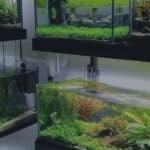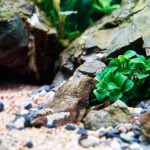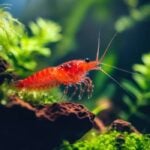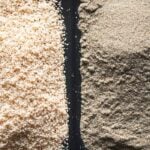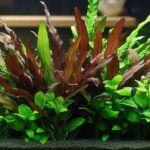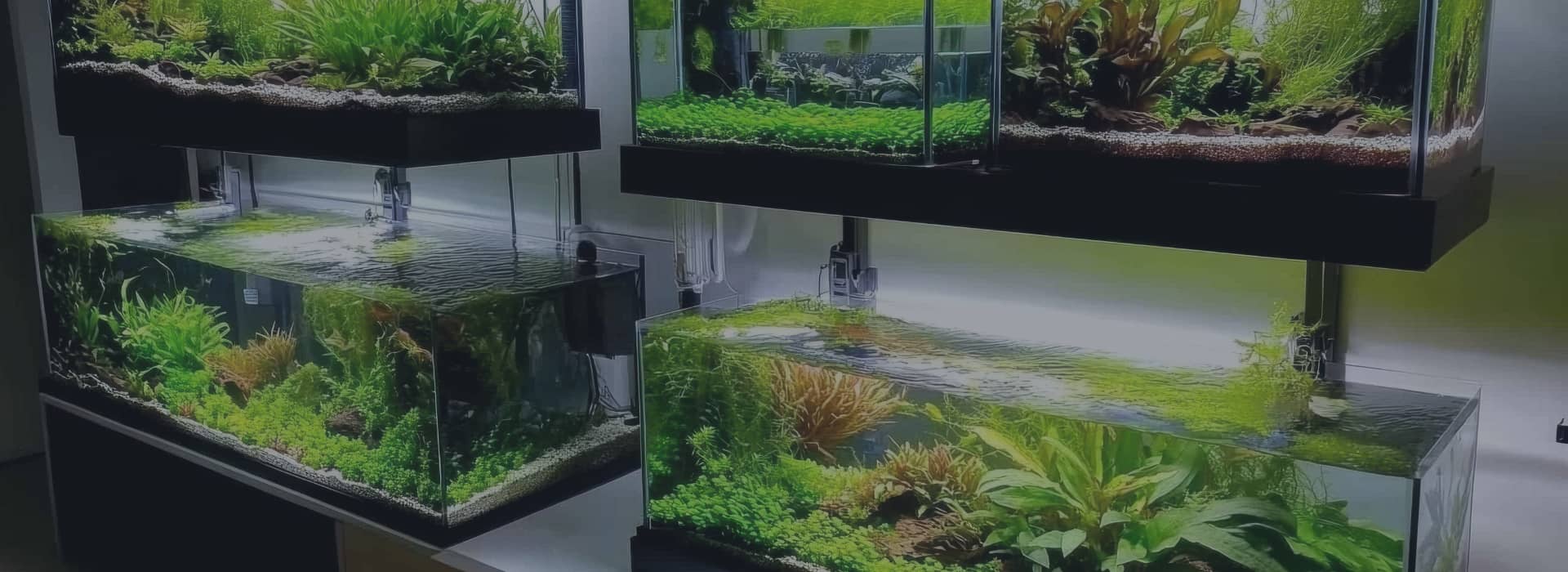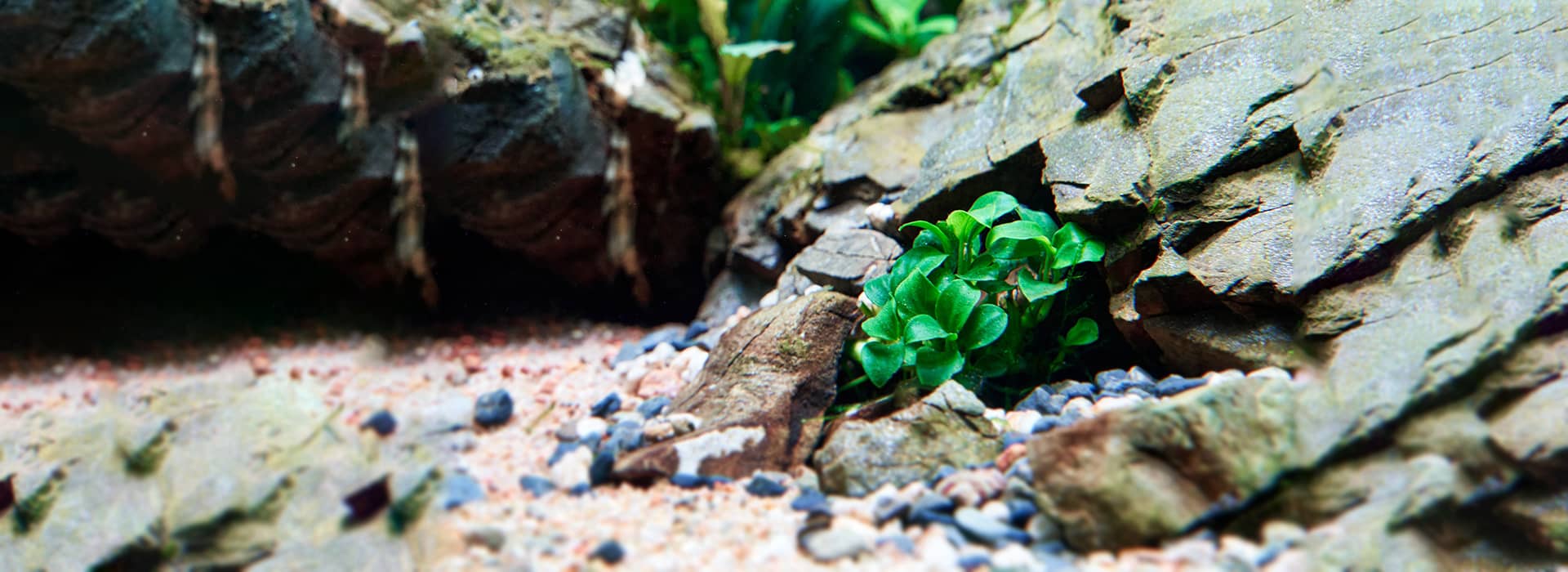Every hobby needs that standard bearer that is easy yet rewarding, accessible yet regal, and unsophisticated yet uncompromising. For the aquascaping hobby, that is the Anubias. It is rightfully referred to as the queen of the planted aquarium aquascape.
Anubias is a genus or group of a vast array of aquatic plants. Most of them share similar characteristics, such as being very hardy and low maintenance. They can even grow in tanks that do not have substrates.
All these qualities make them great for beginner aquascapers. They are also interesting and diverse enough to give even the most experienced hobbyist a rewarding experience. It was also one of the first plants that I had great success with. Here is everything there is to know about the Anubias genus of plants.
Origins Of Anubias In The Aquascaping Hobby
Anubias plants have been a popular choice for aquarium hobbyists for several decades. The first Anubias species to be introduced into the aquarium hobby was Anubias barteri, which was collected in West Africa and brought to Europe in the 19th century.
Anubias plants were initially used as terrarium plants and were later introduced into aquariums. Due to their hardiness and low maintenance requirements, they quickly became popular among aquarists. The slow growth of Anubias plants made them ideal for aquascaping, and they were often used as mid-ground or background plants in aquariums.
In the 1970s, a new species of Anubias, Anubias nana, was discovered in Cameroon. This smaller species became even more popular than Anubias barteri due to its smaller size, which made it ideal for smaller aquariums and nano tanks.
Today, Anubias plants are widely available in the aquarium trade, and many different species and cultivars are available. They continue to be a popular choice among aquarists due to their hardiness, low maintenance requirements, and attractive appearance.
Anubias’ Coolest Property – They Can Grow Without A Substrate
Anubias plants can grow in the substrate but they can do just as fine without one. This sets these plants truly apart. They can do this because they absorb nutrients directly from the water column through their rhizomes and roots. The rhizome is a thick, horizontal stem that grows along the substrate or other surfaces, and it is from this stem that the leaves and roots grow.
In the wild, Anubias plants often grow on rocks, sunken pieces of wood, or other hard surfaces where they can attach their roots and rhizomes on. In aquariums, they can be attached to rocks, pebbles, driftwood, or other decorations using fishing line or glue.
As such, these plants do not require a nutrient-rich substrate to grow. This makes them a popular choice for aquariums where the substrate is kept to a minimum or where the Anubias would have to compete with other demanding plants. It also means that they can tolerate a wider range of water conditions and do not require specialized lighting, fertilizers, or substrates.
The Most Popular Anubias Plants Out There
There are several Anubias species that are popular in the aquarium hobby, each with its own unique characteristics. Some of the most commonly available Anubias species include:
Anubias barteri – This is the original species of Anubias that was introduced into the aquarium hobby. It has broad, dark green leaves and can grow up to 16 inches tall nut the rate of growth is very slow.
Anubias nana – This smaller species of Anubias has become very popular due to its compact size and slow growth. It has small, heart-shaped leaves that grow up to 3 inches in length.
Anubias congensis – This species has long, narrow leaves that grow up to 12 inches in length. It is a slow-growing plant that is best used as a background plant in aquariums.
Anubias frazeri – This species has long, narrow leaves that are light green in color. It grows up to 18 inches tall and is a good choice for taller aquariums.
Anubias coffeefolia – This species has uniquely shaped leaves that are reminiscent of coffee beans. The leaves are green with a slightly reddish-brown coloration on the edges.
Let us take a closer look at each of them
Anubias barteri
Anubias barteri is species that set the ball rolling. This is the original and still quite a worthy option. Here is everything you need to know about Anubias barteri:
Appearance:
Anubias barteri has broad, dark green leaves. This plant can grow up to 16 inches tall although they can take a long time to get that big. The leaves are typically around 5-7 inches long and can grow up to 4 inches wide. The plant has a thick rhizome.
Lighting and water requirements:
Anubias barteri is a slow-growing plant that can tolerate a wide range of lighting conditions. I like to keep them in tanks with low lighting, as otherwise, algae growth can get out of control. As far as the other water parameters are concerned, these plants are very flexible and can thrive in whatever condition is ideal for the fish and other plants in the tank.
Propagation:
Anubias barteri can be propagated by dividing the rhizome. This can be done by cutting the rhizome into sections and planting them separately. The plant can also be propagated by taking stem cuttings, but this can be a bit more challenging due to the slow growth of the plant.
Placement in the aquarium:
Anubias barteri is a great choice for mid-ground or background planting in aquariums. It can be attached to driftwood, rocks, or other decorations in the aquarium. It should not be buried in the substrate, as this can lead to rotting.
Compatibility with fish:
Anubias barteri is generally not eaten by most fish and is considered a safe plant to add to aquariums. However, some extreme herbivores, such as goldfish or some cichlids, may try to eat the leaves or pull it apart.
Anubias barteri is a great choice for aquarists who want to add some greenery to their aquarium without a lot of maintenance.
Anubias nana
Anubias nana is perhaps the most popular species of Anubias in the aquarium hobby. Here is everything you need to know about Anubias nana:
Appearance:
Anubias nana is a small, compact plant that typically grows up to 3-4 inches in height. The leaves are heart-shaped and grow to be around 1-2 inches long. The plant has a thick, short rhizome that can grow up to several inches long. The leaves are typically a dark green color, and the plant can develop small white flowers under certain conditions.
Lighting and water requirements:
Anubias nana is a low-maintenance plant that can tolerate a wide range of lighting conditions. It prefers moderate to low lighting and can do well in both hard and soft water. It can also tolerate a wide range of temperatures, making it a very hardy choice for aquariums.
Propagation:
Anubias nana can also be propagated by dividing the rhizome.
Placement in the aquarium:
Anubias nana is a great choice for small aquariums, nano tanks, or as a foreground plant in larger aquariums. It can be attached to driftwood, rocks, or other decorations in the aquarium. Like all aquatic plants that have rhizomes, these plants should not be buried in the substrate.
Compatibility with fish:
Anubias nana is one of the most durable plants you can get. Most herbivore fish find this plant too tough and those fish that are strong enough to take a chunk out tend to detest the taste. As long as the Anubias nana is firmly attached, it should be fine against most fish. The only time I have seen these plants being eaten was when I tried them out in a tank with turtles. Despite their disagreeable taste, they are safe for the fish in case they do get ingested.
Benefits:
Anubias nana is in many ways the perfect plant. It can grow in very basic setups without needing any fancy lighting or fertilizers. This is great for beginners. They also grow slowly which reduces the frequency of maintenance needed. They can be used to create stunning aquascapes as they can be attached to pretty much anything solid in the aquarium and this makes it a great option for advanced setups as well.
If you want to learn how to keep aquarium plants then the nana is a great plant to start with. Another use case would in be an aquarium that is already established in a way that wouldn’t be great for most plants such as a tank with a bare bottom but you still want some greenery in it.
Anubias congensis
Now we come to the more rarefied Anubias varieties. The one I like the most among them is the Anubias congensis. Here is everything you need to know about Anubias congensis:
Appearance:
Anubias congensis has long, narrow leaves that grow up to 12 inches in length. The leaves are typically a dark green color and can grow up to 2 inches wide. The plant has a thick rhizome that can grow up to several inches long.
Lighting and water requirements:
Anubias congensis is also a slow-growing plant that can be kept in a wide range of lighting conditions. It too is quite tolerant of different water conditions.
Propagation:
Anubias congensis, like most Anubias can be propagated by dividing the rhizome. Taking stem cuttings is also an option, albeit a more challenging one.
Placement in the aquarium:
Anubias congensis is a great choice for mid-ground or background planting in larger aquariums. It can also be attached to driftwood, rocks, or other decorations in the aquarium. The congenesis’ rhizome should not be buried in the substrate either.
Compatibility with fish:
Anubias congensis isn’t edible and most fish including herbivores will leave it alone. Some fish may try to get it unattached but as long as this plant is properly established, this shouldn’t be a problem. I like to do this with a new plant in a nursery tank without any fish. I temporarily fix the plant to whatever it is I want them to grow on with a fishing line or some aquarium safe glue. Once the plant has had enough time to get properly attached, I add it to the tank with the fish.
Benefits:
Anubias congensis is an exciting option for a background plant especially if you want something that won’t just take over the whole tank. It also creates a sparser appearance and is perfect for something like a jungle aquascape.
The Anubias congensis may not be as readily available as its more popular cousins but it does make for a great addition in large and tall tanks. It adds more variety while still being as hardy and resilient as the barteri and nana varieties.
Anubias frazeri
Anubias frazeri is another less commonly available species of Anubias. Here is everything you need to know about Anubias frazeri:
Appearance:
Anubias frazeri has large, oval-shaped leaves that can grow up to 7 inches long and 3 inches wide. The leaves are the typical dark green color and have a leathery texture. This plant too has a thick rhizome that can grow up to several inches long.
Lighting and water requirements:
Anubias frazeri is a slow-growing plant whose lighting and water parameter requirements are similar to the other Anubias plants we have seen so far. In other words, it is adaptable to whatever condition is best for the other inhabitants of the tank.
Propagation:
Anubias frazeri can be propagated by dividing the rhizome as well as by taking step cuttings provided the plant is large enough.
Placement in the aquarium:
Anubias frazeri is a great choice for mid-ground or background planting in larger aquariums. As is the case with the other Anubias varieties, it too can be attached to driftwood, rocks, or other decorations in the aquarium. The rhizome should be kept above the substrate.
Compatibility with fish:
Anubias frazeri is generally not eaten by most fish and is considered a safe plant to add to aquariums.
Benefits:
If you are creating an Anubias-only aquarium, the frazeri can offer an interesting option as it is a bit different from a lot of the other Anubias varieties. It can also be used to create a secondary focal point in a heavily planted tank with a lot of different plants. It looks great in a pot as well.
The Anubias frazeri is perfect for those who are well versed with all the common Anubias types and need something a bit different without being a headache to take care off. Adding multiple frazeris and no other plants to create a sparse monotonous look is another cool option with this plant.
Anubias coffeefolia
Almost every Anubias variety has the characteristic dark green colouration seen in all the varieties we have looked at so far. Anubias coffeefolia is a species of Anubias that is a bit different with its unique leaf shape and coloration. Here is everything you need to know about Anubias coffeefolia:
Appearance:
Anubias coffeefolia has long, narrow leaves that grow up to 6 inches in length. The leaves are a greenish-brown colour and have a rippled texture, giving them the appearance of a coffee bean, hence the name. This plant also has a thick rhizome that can grow up to several inches long.
Lighting and water requirements:
Even though the Anubias coffeefolia doesn’t look like the typical Anubias, it is still just as hardy. It is very adaptable and will tolerate whatever conditions are needed for the other plants and fish in the tank.
Propagation:
Anubias coffeefolia can also be propagated by dividing the rhizome or through stem cuttings.
Placement in the aquarium:
Anubias coffeefolia is a great choice for mid-ground or foreground planting. It can even be used as a centrepiece plant. It is suitable for tanks of all sizes including nano tanks. It also has the ability to be attached to driftwood, rocks, or other decorations.
Compatibility with fish:
Anubias coffeefolia is compatible with most plants apart from goldfish or large and aggressive cichlids.
Benefits:
Anubias coffeefolia is one of the hardiest plant you can get that has shades of colours other than green. This adds a nice bit of contrast. It may be one of the most difficult Anubias varieties to procure but it is worth it.
Anubias coffeefolia is for those hobbyists who want something off of the beaten path that is still easy to take care of.
Some Creative Ways to Plant Anubias Species
The ability of these plants to grow without a substrate makes them very versatile. They can be planted in many creative ways in aquariums. Here are some ideas:
- Attach Anubias plants to rocks or driftwood: This is a classic way to plant Anubias and can create a natural and beautiful look in the aquarium. You can attach the plants using fishing line or aquarium-safe glue.
- Create a wall of Anubias: You can attach Anubias plants to a plastic mesh or screen and create a wall of plants in the aquarium. This can provide a beautiful and unique backdrop to the tank. In my opinion, this is the best background for a planted tank.
- Plant Anubias in pots: You can plant Anubias in pots and place them in the aquarium. This allows you to easily move the plants around to create a unique and ever evolving look in the aquarium.
- Use Anubias to create a carpet: Although Anubias is not traditionally used to create a carpet, you can plant small pieces of the plant close together to create a dense and lush carpet effect. This does require a lot of patience and careful pruning.
- Plant Anubias in hanging baskets: You can plant Anubias in hanging baskets and suspend them from the aquarium cover. This creates a unique and beautiful look and allows the plants to grow freely without being obstructed by other decorations.
- Create a bonsai tree: You can attach Anubias on a piece of driftwood or rock and trim the leaves and stems to create a bonsai tree effect. This can be a stunning centerpiece for any aquarium.
Remember to consider the lighting and water flow requirements of Anubias when deciding on a planting method, as different methods may affect the plant’s growth and health differently.
FAQ
Here are some frequently asked questions (FAQ) about Anubias plants:
How do I attach Anubias plants to my aquarium decorations?
Anubias plants can be attached to rocks, driftwood, or other decorations in the aquarium using fishing line or glue. They can also be planted in the substrate. Just make sure to avoid burying the rhizome in the substrate, as this can lead to rotting.
How often should I fertilize Anubias plants?
Anubias plants do not require frequent fertilization. In fact, they can tolerate a wide range of water conditions and do not require specialized fertilizers or substrates. However, if you notice slow growth or yellowing leaves, you can add a small amount of liquid fertilizer or root tabs to the water.
Do Anubias plants need high light?
Anubias plants are slow-growing and do not require high light. They can tolerate moderate to low lighting conditions and can even grow in shade. However, too much light can lead to algae growth and may cause the leaves to turn brown.
Can Anubias plants survive without CO2 injection?
Anubias plants do not require CO2 injection to survive. They can absorb carbon dioxide from the air and water and can tolerate a wide range of carbon dioxide levels.
What fish are compatible with Anubias plants?
Most fish are compatible with Anubias plants, as the leaves are generally not eaten by fish. However, some herbivorous fish, such as goldfish or some cichlids, may try to eat the leaves. In general, Anubias plants are a safe and hardy choice for aquariums.
Can Anubias plants be grown emersed?
Yes, Anubias plants can be grown emersed (out of water). However, they require high humidity and frequent misting to prevent the leaves from drying out. Emersed Anubias plants can be grown in a terrarium or in a humid plant setup in the aquarium.
How To Choose The Right Anubias Species?
When choosing the right Anubias plant for your aquarium, there are several factors to consider:
Size: Anubias plants come in a variety of sizes, from small to large. Consider the size of your aquarium and the space you have available for the plant when choosing the right size.
Growth rate: Almost all Anubias plants are slow-growing. Be very aware of this when choosing any Anubias variety.
Lighting: Anubias plants can tolerate a wide range of lighting conditions. However, they do not do well under strong lighting.
Compatibility with fish and other plants: Anubias plants are generally compatible with most fish and other plants. Larger varieties with strong roots will do well in tanks with large fish known to go after plants
Personal preference: Lastly, choose an Anubias species that you personally find aesthetically pleasing and that fits the overall look and feel of your aquarium.
To Sum Things Up!
Anubias plants are a popular and versatile addition to aquariums. They are hardy, easy to care for, and can tolerate a wide range of water conditions and lighting levels. With their unique and attractive foliage, they provide a natural and beautiful accent to any aquarium setup. Their ability to absorb nutrients and water through their rhizomes and roots means that they do not require a nutrient-rich substrate and can be easily attached to aquarium decorations. Anubias plants are also compatible with most fish and other aquatic plants, making them a great choice for both novice and experienced aquarium enthusiasts. Whether you’re looking to add a pop of green to your aquarium or create a lush aquascape, Anubias plants are a versatile and reliable choice.
